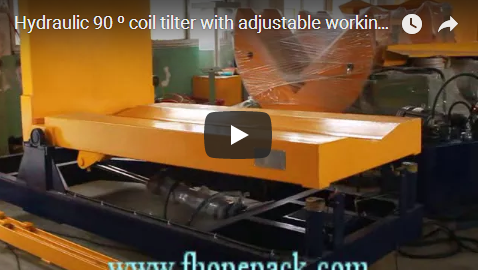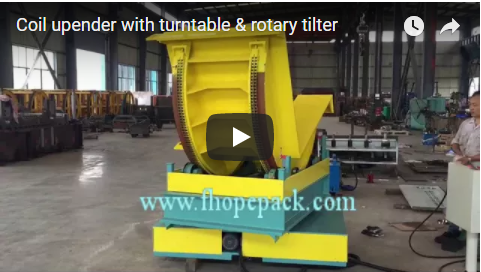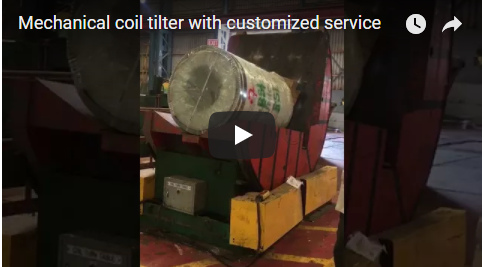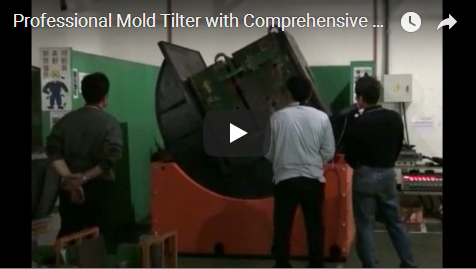Advanced 90-Degree Mold Flipper: Enhancing Safety and Productivity in Heavy Mold Handling
Introduction: Addressing Critical Industrial Handling Challenges
In modern manufacturing, particularly within sectors like automotive, aerospace, foundry operations, and plastic injection molding, the efficient and safe handling of large, heavy molds and dies is paramount. Manual or inadequate handling methods present significant operational risks. This specialized 90-degree mold flipper provides an engineered solution, automating the tilting process for heavy molds, dies, and similar bulky items, thereby mitigating risks and enhancing workflow efficiency. This equipment is pivotal for operations requiring precise orientation changes for maintenance, inspection, or production setup.
The Challenge: Risks and Inefficiencies in Heavy Mold Manipulation
Handling multi-ton molds, often with irregular geometries, poses substantial challenges:
- Safety Hazards: Manual manipulation or the use of unsuitable lifting gear significantly increases the risk of accidents, potentially leading to severe personnel injuries and contravening Occupational Safety and Health Administration (OSHA) guidelines regarding safe material handling.
- Asset Damage: Molds and dies represent significant capital investment. Improper handling techniques, such as uncontrolled swinging or inadequate securing, can lead to impacts or drops, causing costly damage to precision surfaces or alignment features, resulting in production downtime and expensive repairs or replacements. As noted in studies on manufacturing ergonomics, non-automated handling contributes significantly to material damage incidents.
- Operational Bottlenecks: Traditional methods involving cranes, complex rigging, and multiple personnel are often time-consuming and inefficient, creating bottlenecks in mold maintenance schedules and production changeovers. Research published in journals like the International Journal of Production Research highlights the cycle time reductions achievable through dedicated automation equipment.
- Complexity and Error: Utilizing generic lifting equipment often requires specialized spreaders, custom rigging configurations, and meticulous fastening, increasing process complexity and the potential for human error in securing the load.
Engineered Solution: The Motorized 90-Degree Mold Flipper
This purpose-built mold flipper addresses these challenges through robust design and intelligent automation, incorporating principles referenced in material handling equipment patents (e.g., relating to secure load locking during rotation).
Design and Construction Features:
- Heavy-Duty Structure: Fabricated from high-strength structural steel (e.g., Q345B or equivalent) to ensure rigidity and durability under continuous industrial use.
- Drive System: Typically employs a robust electro-mechanical drive system featuring high-torque motors coupled with precision gear reducers for smooth, controlled 90-degree rotation. Hydraulic options may be available for specific high-load or environmental requirements.
- Load Support Platform: Features a stable, reinforced platform designed to securely accommodate the mold base.
- Adjustable Clamping/Securing Arms: Equipped with mechanically or hydraulically actuated arms that adjust to securely grip molds of varying dimensions, ensuring load stability throughout the rotation cycle. This adaptability is crucial for shops handling diverse tooling, as highlighted in Modern Machine Shop case studies.
Key Operational Parameters:
- Load Capacity: Engineered to handle loads up to 50 tons (custom capacities available).
- Rotation Angle: Precisely controlled 90-degree rotation.
- Accommodated Dimensions: Adjustable arms cater to molds/objects with lengths, widths, and heights typically ranging from 1000mm to 1800mm (customizable ranges possible).
- Rotation Speed: Controlled rotation typically completed within 60-90 seconds (variable based on load and specific configuration).
- Control System: Integrated Programmable Logic Controller (PLC) with a user-friendly Human-Machine Interface (HMI) touchscreen panel, offering both automated cycle control and manual operation modes for setup and maintenance.
- Operating Environment: Designed to function reliably in typical industrial environments with temperatures ranging from -10°C to 50°C.
Advanced Safety Mechanisms:
- Integrated Safety Features: Includes multiple emergency stop buttons, position sensors (limit switches/proximity sensors) to confirm end-of-travel and clamp status, and potentially interlocking mechanisms preventing operation under unsafe conditions, aligning with safety standards like ISO 13849-1.
- Controlled Operation: Smooth acceleration/deceleration profiles minimize load shifting during rotation.
- Low Noise Operation: Operates at a noise level under 70 dB, contributing to a safer and more comfortable work environment per OSHA recommendations.
Integration and Automation:
- Seamless Workflow Integration: Designed for straightforward integration into existing production lines or maintenance bays.
- PLC/HMI Control: Allows for easy operation, status monitoring, and potential communication with plant-level systems (e.g., MES via standard protocols like Ethernet/IP or Profinet, depending on configuration).
Quantifiable Benefits for Industrial Operations
Implementing the
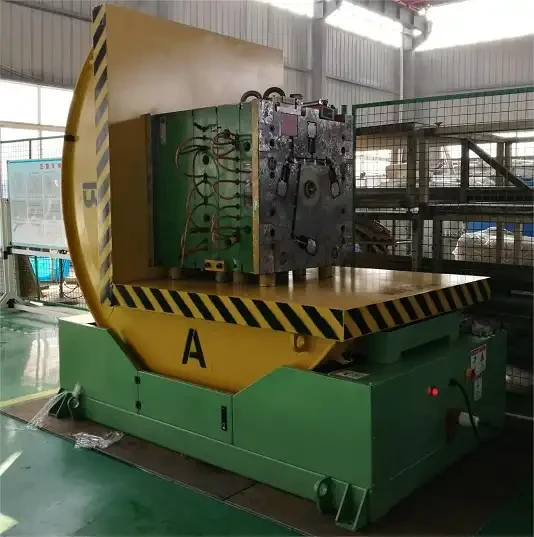
- Enhanced Safety and Ergonomics: Drastically reduces manual handling risks, minimizing potential for worker injuries and associated costs, contributing to better OSHA compliance.
- Streamlined Workflow & Reduced Cycle Times: Automates the turning process, significantly cutting down the time required compared to manual or crane-based methods, boosting productivity in mold maintenance and production changeovers.
- Minimized Risk of Damage to High-Value Tooling: Controlled, secure handling prevents accidental impacts and drops, protecting expensive molds and dies from damage.
- Reduced Labor Costs: Frees up personnel previously required for complex rigging and spotting tasks, allowing reallocation to value-added activities.
- Improved Operational Consistency: Automated cycles ensure repeatable and precise positioning every time, enhancing process quality.
- Versatile Application: Effectively handles not only molds and dies but also other heavy, bulky items requiring safe reorientation.
Primary Applications
This equipment is indispensable in various industrial settings:
- Plastic Injection Molding: Facilitating mold maintenance, cleaning, and changeovers.
- Die Casting Foundries: Handling large, heavy dies for servicing and setup.
- Automotive Manufacturing: Managing stamping dies and other large tooling components.
- Aerospace Industry: Handling complex fixtures and tooling.
- General Manufacturing: Safely rotating heavy fabrications, engines, or assemblies.
Maintenance and Reliability
Built for industrial demands, the mold flipper requires minimal maintenance. Following the manufacturer's recommendation for semi-annual inspections and lubrication ensures continued reliability and operational longevity, aligning with Total Productive Maintenance (TPM) principles.
Contact Us for Your Custom Handling Solution
Elevate your facility's safety and efficiency standards. Contact our engineering team to discuss your specific mold or heavy load handling requirements. We can provide detailed specifications, discuss customization options, and generate a tailored quote to address your unique operational challenges.
Frequently Asked Questions (FAQs)
1. Can the mold flipper accommodate molds outside the standard 1000mm-1800mm range?
Yes, the design is customizable. The adjustable mechanical arms and overall structure can be engineered to handle specific mold dimensions and weights beyond the standard range upon request.
2. What specific safety certifications or standards does the equipment meet?
The flipper incorporates safety features designed in accordance with general machine safety principles (e.g., ISO 12100). Specific certifications (like CE marking) depend on the target market and final configuration. Key components include emergency stops, limit switches, and secure clamping, aligning with common industrial safety practices.
3. How does the mold flipper integrate with overhead crane systems?
The flipper is typically floor-mounted. Overhead cranes are used to load the mold onto the flipper's platform and unload it after rotation. The flipper's controls can potentially be interlocked with crane operations for enhanced safety if required as part of a larger integrated system.
Ready to optimize your mold handling process? Reach out today to explore how our advanced 90-degree mold flipper solution can benefit your operations.


